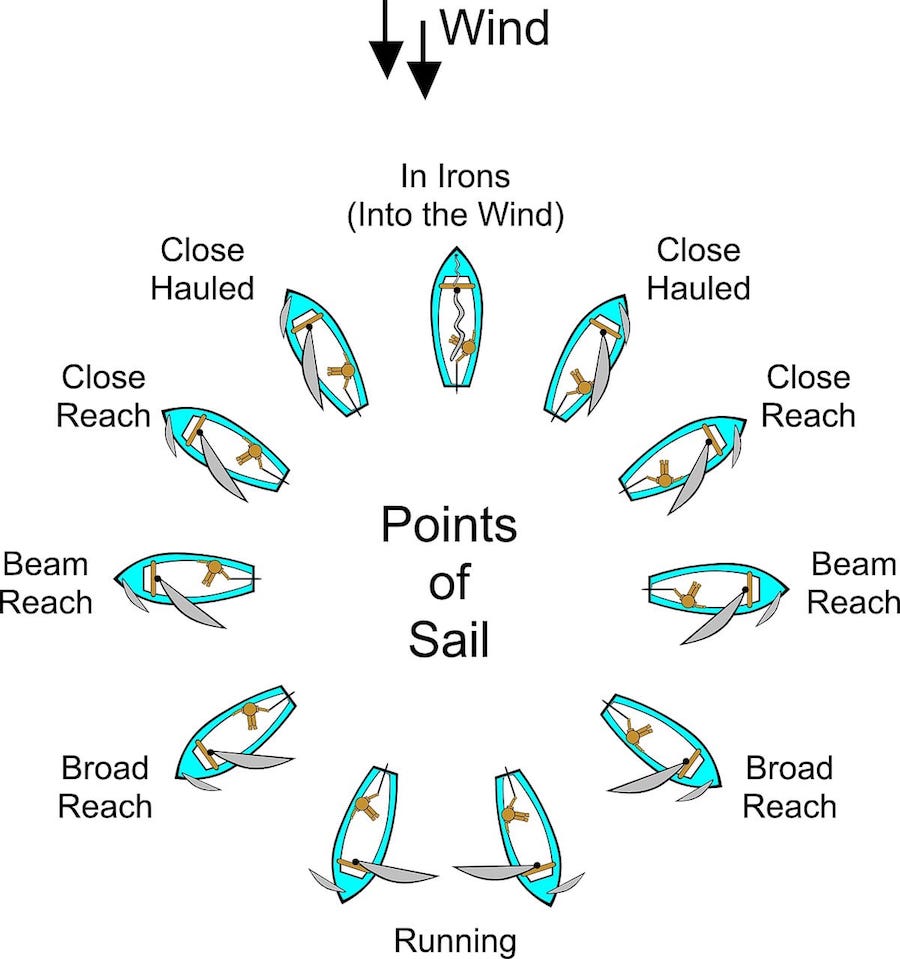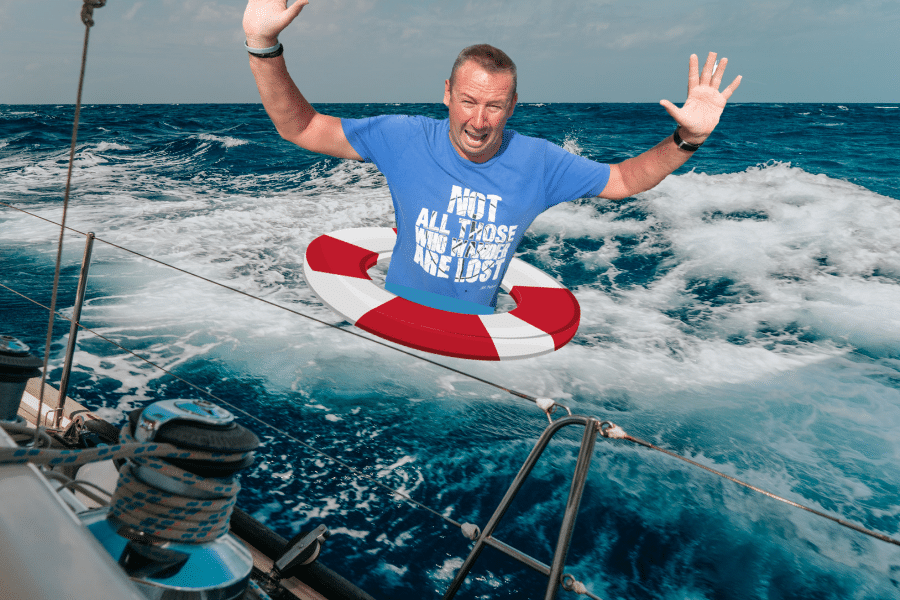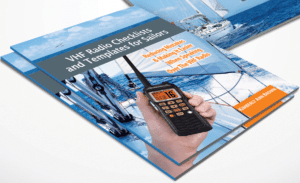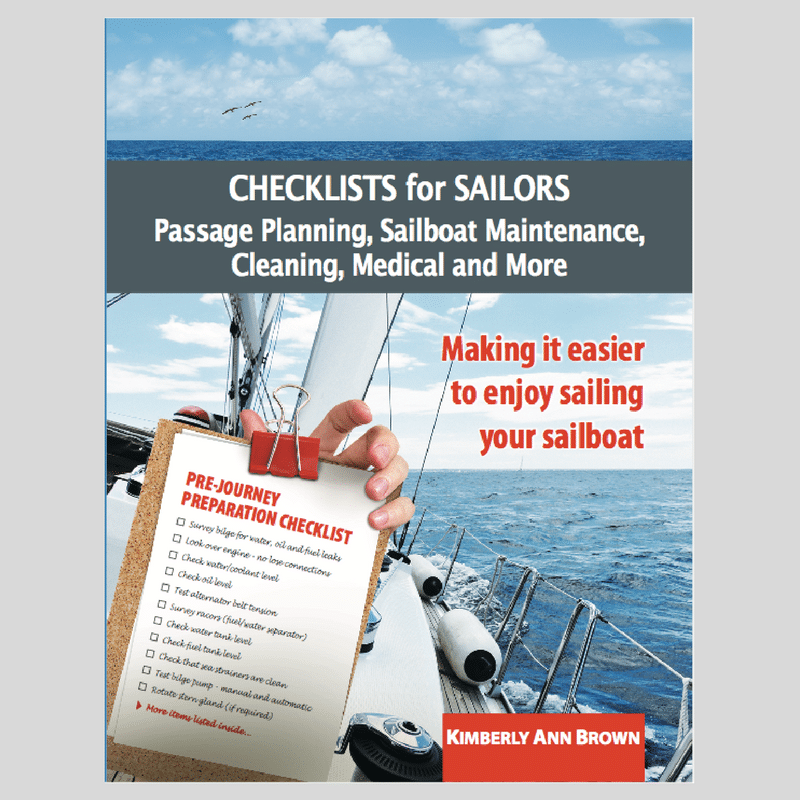When it comes to sailing and sailboats there are several different ways to do a variety of tasks. Some captains and sailing schools preach one method and others preach another. Your best bet is to understand the options and then choose the system, or way, that works best for you. How will you know what works best for you?! You make sure to schedule time to do Man Overboard (MOB) drills.
The Man Overboard procedure we use on Britican is the heave-to and drift method.
We practice this method by doing Man Overboard drills using one of our fenders, named Jimmie. By practicing how to do it the procedure becomes second nature. Watch the video and then carry on reading below to view our Man Overboard Checklist.
We use the Heave-to and Drift method because it’s the fastest and easiest method. There are very few steps and it’s actually difficult to get it wrong. No sails need to be dropped, the casualty is approached in the least scariest way (beam to the casualty) rather than bow heading for the casualty. And it can be done with just two people – one being on board and the other in the water.
So, what happens when someone (or something) goes overboard?
Man Overboard Checklist
- Yell ‘Man Overboard’ and point to the casualty. If several people are on board, the person who sees the casualty doesn’t take his or her eye’s off the person in the water. They just keep pointing and all available crew does the following…
- Press the Man Overboard button to mark the location where the casualty went over
- Throw all Man Overboard devices in the direction of the casualty such as flotation devices and the Jon Buoy
- Turn the boat into a beam reach allowing the wind to hit the boat along the beam, or the side of the boat. See wind chart below. (Tip: make it a routine to ask yourself from time to time, ‘if I have to turn the boat into a beam reach, which way do I need to turn?’)
- Start the engine
- Head forward for two boat lengths (this will allow you to put enough space between you and the casualty)
- Bring the sails in as tight as possible if they’re not already in
- Turn the boat into the wind forcing the headsail to flop over onto the wrong side without releasing any lines (called heaving-to or a crash tack). This will slow the boat down almost to a stop. It will also place the boat downwind of the casualty so the causally will float towards the boat rather than away
- Use the engine to go forward and reverse lining the casualty up to the beam, or side, of the boat. You’re not steering towards the casualty. Rather, you are letting the casualty drift back to you and providing the whole boat as a mechanism to grab them
- All crew members to line up along the side of the boat, with pole in hand, offering the casualty peace of mind that you’re coming and preparing to lift the him or her out of the water

Some extra notes about the Man Overboard procedure
If there are enough people and you’re in an area where help could be close by, get someone on the
VHF radio to do a MAYDAY. If you need the template for how to read out a MAYDAY, customizable to your MMSI, Call Sign and Boat name, consider purchasing my ‘VHF Radio Checkists And Templates For Sailors’
Once you’re lined up to the casualty it might not be possible to lift them out of the water by hand or with a pole. Have discussions and to what options are available so that you’re prepared for the worst.
For example, if Simon falls overboard I will most likely not be able to pull him out. If he’s conscious and the boat isn’t slapping around I can get him to the back of the boat and help him up the swim latter.
Be warned, however, that in big seas it’s not safe to try and get on board with the stern slapping. It could clonk the casualty on the head and knock them out!
The other options I have is to attach a halyard to Simon and hoist him up onto the deck or use our outboard crane to get him back on board.
And make sure you know about secondary drowning
Secondary or “delayed” drowning happens when the casualty inhales water into his or her lungs, causing inflammation or edema (swelling). The edema can occur hours or even days after the initial contact with water. Death from delayed drowning is due to swelling of the small air sacs in the lungs, preventing oxygen from entering the bloodstream.
Anyone that has been recovered from a Man Overboard incident needs to be under supervision for at least 24 hours. Keep an eye out for:
- Difficulty breathing
- Persistent coughing
- Choking
- Lethargy or sleepiness
- Irritability
- Vomiting
A Man Overboard is a life-threatening event
Make sure to take MOB’s very seriously. Understand that it’s not a good idea to jump into the water to try and rescue a casualty! Practice the various ways to do a Man Overboard procedure by doing drills with a fender or other flotation device. Think about what you’d do if your partner went over – how would you get them back into the boat?
No one wants to even think about things like this happening but if you don’t it could mean a life. A life! Do the drills, understand your options and get to a point where you’re confident in yourself. Doing this small task will benefit everyone 

And if you’d like to come join us on Britican to learn how to do MOB drills, consider booking yourself onto our weeklong Britican Experience. We’ll teach you want you need to know to become more confident a sailing and sailboat management.
And if you like Checklists, make sure to purchase my bestselling guide Checklists For Sailors.
The post Quickest & Easiest Man Overboard Procedure appeared first on Sailing Britican.


